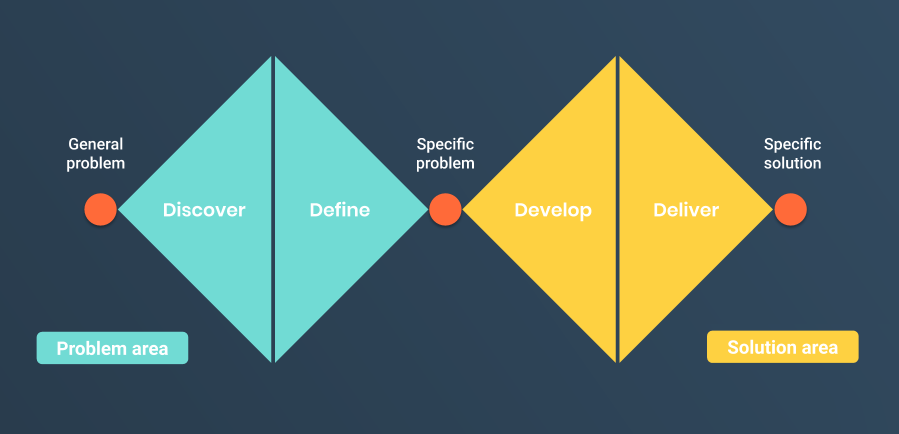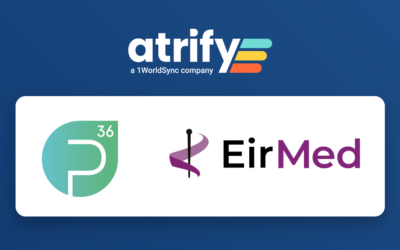What is UX Design? And why are we doing this at atrify?
The reality of our lives has changed enormously over the last 20 years in terms of the use of electronic devices, the Internet and digital applications. Every day we are surrounded by a whole range of electronic and digital products. And we've gotten used to it: instead of being on the road with a walkman and no phone, we constantly carry our mobile office with us in the form of our smartphone. We make phone calls, listen to music, write messages, compare prices, network with friends and much more - quickly, easily and conveniently with just a few clicks. That is our claim. If this doesn't work with an application, we get annoyed and look for alternatives - because there are usually plenty of them.
Whether we find a product or an application good or bad is clearly related to how we experience it in use and what experiences we have with it - in short, with the user experience. Can we use the application and does it support us in our tasks? Is it even fun to use it?
Today it is no longer enough to simply make applications usable according to pragmatic aspects. The expectations of today's users have obviously increased.
Digital products must also take emotional and aesthetic aspects into account in order to be successful. That means they must be well thought out, attractively designed and both simple and pleasant to use - and above all for the people for whom they are developed. User Experience Design (UX Design for short) takes these factors into account, as it places the user at the centre of the design process. UX Design provides the tools and methods to better understand for whom we design and how we can do it systematically.
UX Design - what do we do with it at atrify?
We find: UX Design is a convincing approach that is worth tackling! We put our users at the center of our product development! Full of enthusiasm, the atrify-UX team - in the beginning a one-man show - started to work a few years ago.
It all started with atrify publishingour data entry solution for manufacturers and suppliers. The plan was the UX Design Process for this solution first. We are therefore the first in the "Problem Room" and took a close look at who our users are, what tasks they want to do and what problems they encounter. We already had a little foreboding of what was to come. We knew that the application context in which we were moving was very complex and multi-layered. The Exchange of product data via the Global Data Synchronization Network (GDSN) follows a special choreography - from the sender via the data pool and the Global Registry to the recipient, provided all parties give it the OK. There must be many Standards be considered and countless Attributes be filled.
We already had a little foreboding of what was to come. We knew that the application context in which we were moving was very complex and multi-layered. The Exchange of product data via the Global Data Synchronization Network (GDSN) follows a special choreography - from the sender via the data pool and the Global Registry to the recipient, provided all parties give it the OK. There must be many Standards be considered and countless Attributes be filled.
If you look at old screenshots of publishing, you can see that we have put some of this complexity on our users. And that's exactly what was reflected to us in the first user interviews and surveys. Our users confirmed more or less clearly that the usage sometimes overtaxes them and that especially the technical terms within the GDSN are a challenge. We ourselves - once sensitized to this fact - also noticed some violations of usability guidelines.
The way to go...
As hard as these insights hit us at the time, it became clear that this is exactly where we have to start and that we are on the right path with the improvement of the user experience.
The feedback from our customers was so extensive and detailed that we very quickly scored quite a few points. We then proceeded step by step, prioritizing the most urgent problems and developing ideas and possible solutions in the "solution room". Prototypes were developed, tested and improved in several cycles until the improved features could be implemented in the production system. This iterative approach allowed us to quickly correct when we noticed that an idea did not work. So we took it nut for nut, feature for feature and cracked it.
We have been able to make many improvements in the atrify publishing last few years, which is reflected in the user feedback. But that is not enough. Not only in publishing but also in all other atrify products there is still much to do to make them even more user-friendly and user-centered. We know that only a holistically positive user experience can be convincing in the long term and ultimately be economically successful. This is our goal and we will continue to work on it.
For more exciting insights from the UX Team - stay tuned!




